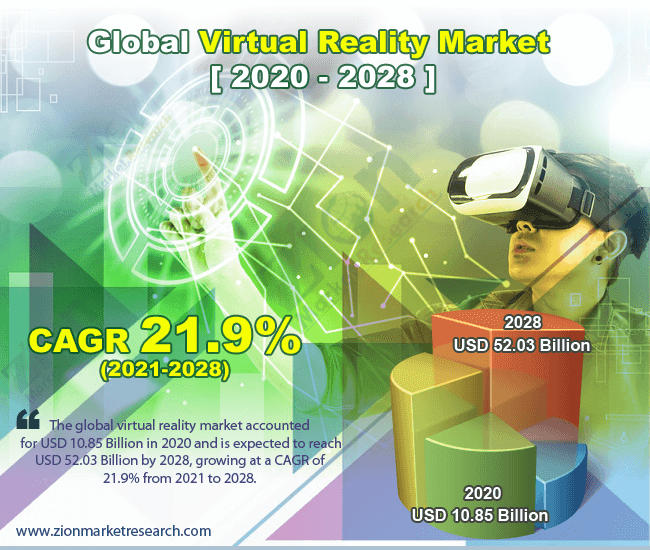Virtual Reality (VR) is a computer-generated simulation of a three-dimensional environment that can be experienced and interacted with in a realistic and immersive way. The experience is typically achieved through a headset that covers the user’s eyes, providing them with a 360-degree view of the virtual environment. The headset tracks the user’s head movements, allowing them to look around the environment and interact with virtual objects.
Virtual reality technology has been around for several decades, but recent advancements in hardware and software have made it more accessible and affordable. Today, VR is used in a variety of industries, including entertainment, gaming, education, healthcare, military, and more.

The key components of a VR system include:
- Head-mounted display (HMD): This is a device that the user wears on their head that displays the virtual environment. HMDs can be tethered to a computer or mobile device, or they can be standalone devices.
- Input devices: These are devices that allow the user to interact with the virtual environment. Examples include handheld controllers, hand tracking devices, and full-body tracking sensors.
- Computer hardware: This includes the computer or mobile device that powers the VR system. It needs to be powerful enough to render the virtual environment at a high frame rate to prevent motion sickness and ensure a smooth experience.
- Software: This includes the virtual environment, which can be created using 3D modeling software, game engines, or specialized VR development tools.
The benefits of VR include enhanced learning and training experiences, improved entertainment, improved marketing and advertising, improved accessibility for people with disabilities, and improved collaboration and communication. However, there are also some challenges to VR, including the cost of hardware, the need for high-performance computers or mobile devices, and concerns around motion sickness and eye strain.
Overall, virtual reality technology is expected to continue to evolve and improve in the coming years, with the potential to transform a wide range of industries and create new opportunities for immersive and interactive experiences.
Importance and Benefits of Virtual Reality:
- Enhanced learning and training: VR provides a safe and controlled environment for learning and training that can simulate complex and dangerous scenarios. For example, medical students can practice surgeries, pilots can simulate flight scenarios, and soldiers can simulate combat situations.
- Improved entertainment: VR offers a new level of entertainment experiences. Users can immerse themselves in virtual worlds and experience things that may not be possible in real life, such as flying, deep sea diving, or exploring other planets.
- Enhanced marketing and advertising: VR provides an immersive and interactive platform for marketing and advertising, allowing companies to showcase their products and services in a way that traditional advertising cannot.
- Improved accessibility: VR provides opportunities for people with disabilities to experience environments and activities that may be difficult or impossible in the real world.
- Improved collaboration and communication: VR can be used to bring people together in virtual environments, allowing them to collaborate and communicate in real-time, regardless of their physical location.
